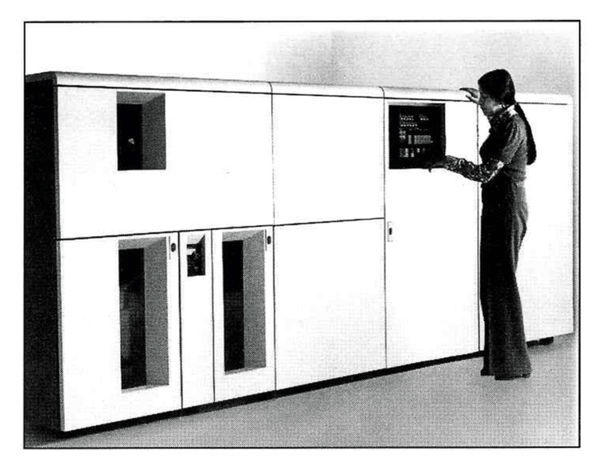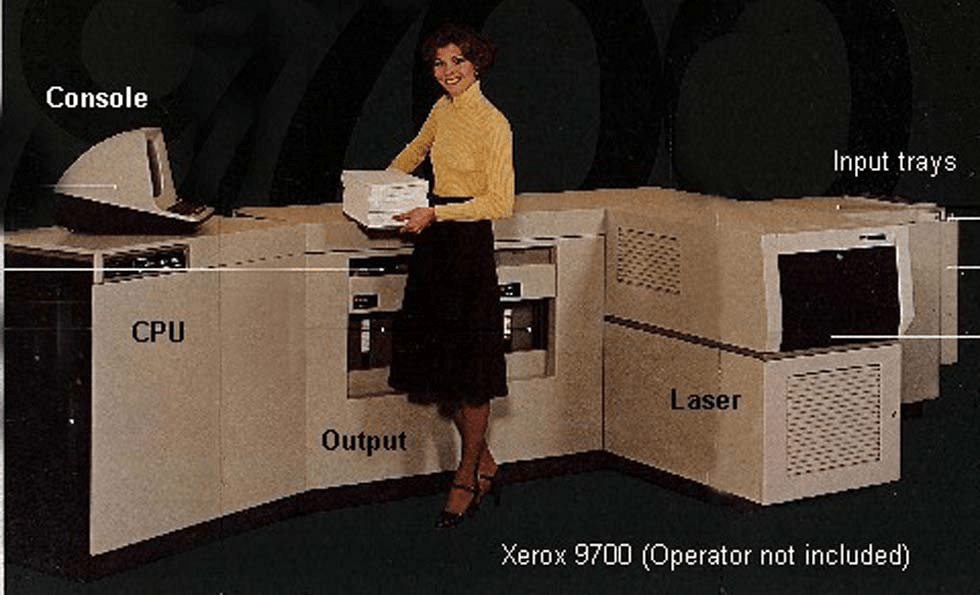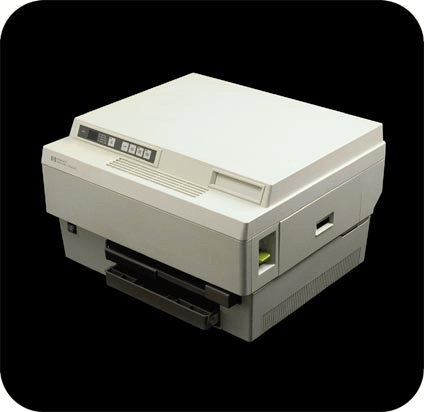Laser Printers - The Quiet Revolution
It’s hard to believe that up until 30 years ago, there weren’t any printers in the office or at home. If you wanted to publish a document, it had to be typed or handwritten. The impact of printing technology has changed and shaped the way people create and publish documents.
The fact that a professional dame popular all office printers; typewriters, electronic typewriter, daisy wheel and dot matrix printers relied on raised metal characters or pins striking an ink or carbon ribbon to transfer an image onto the paper. In a small office the constant clatter would have been annoying. In a typing pool or print room - deafening.
Try working with this noise!
Imagine hundreds of hammers hitting hundreds of nails hundreds of time a minute! The laser printer was created in 1969 and has evolved tremendously and will celebrate its 50th birthday in 2019. The real revolution of the laser printer was that it was the first non-impact office printer.
Do you know how the laser printer works?
It’s an incredible piece of technology that many of us take for granted. The technology relies on the use of toner and lasers. Prior to this, printing was done only with an ink-based solution.
What is really clever is how the printer’s design uses lasers and toner cartridges are used to produce an image that is sent from a computer. And how the design has been improved over the years to produce high-quality prints quickly.
The video below describes the technology in laser printers in a simple way.
IBM released the first commercial laser printer in 1976 (the IBM 3800) and printed on rolls of paper that were perforated and each sheet had to be separated from the next.. The photo below shows the size of one of the printers that was installed in an accounting practice.

The photo below shows the original Xerox 9700 that was released onto the market in 1978. The printer produced 120 printed pages per minute and was huge in both size and price. The printer alone generated over $1 billion in revenue to Xerox’s printer business. It was the first printer to use sheets of paper rather than a continuous roll.

Costs were significantly high up until the 1990s, when Hewlett-Packard introduction of the LaserJet IIP allowed consumers to purchase a Laser printer for less than $1500 USD. Not only did the size shrink dramatically, but so did the price. It was the very first desktop laser printer and made laser printing available in the office for the first time. Now quiet printing from a PC was possible in a small office was possible.
At almost the same time Apple launched the Apple Laserwriter which, in combination with publishing software such as PageMaker, allowed WYSIWYG (What You See Is What You Get) printing. Now letters could be written on a desktop PC and printed on to letterhead. With the introduction of the HP LaserJet II the writing was on the wall for the typewriter.
These early laser printers could only print in black and so, with the availability of colour inkjet printers they were in danger of falling behind because of this limitation.

The next major milestone was the development of colour laser printers. Both Apple and Canon had released their colour printers whose prices started from $7000 USD a unit. If you look on the Cartridges Direct website, you can see that colour laser printers are stocked for less than $183. Colour laser printing started to close the gap with Inkjet printers.
But there was more to come.
Manufacturers constantly strive to reduce the space required for their devices. Copiers and scanners use the same technology as the printers and so all the functions, printing, copying and scanning were incorporated into the one device. The first MFPs became available in the 1990s and today all manufacturers offer MFPs in their range.
In the 200s more and more features have been added to Laser Printers. Today’s Laser Printer can also give wireless printing, reducing the tangle of wires that were so common once upon a time. Now they can be a communication hub with the ability to send faxes as well as be accessed by smartphones, and tablets from remote locations. A big advance has been in the area of data security. Now most printers have security features to prohibit unauthorised access to the printer, and the network, to keep all the data safe
We’ve come a long way in the past thirty years.
It’s been a revolution in office equipment. And a quiet one.
Explore Popular Articles
-
How To Disable Firmware Updates For HP Printers
13th Feb 2024There are a few notable reasons why printer manufacturers produce their own branded printer ca
-
Top 5 Best Printers For Artists In 2024
13th Feb 2024Our home and office printers can actually be pretty versatile machines. Alongside being able to p
-
Top 5 Best Scanners For 2024
13th Feb 2024More often than not, we only realise how invaluable printer features are until we actually start




